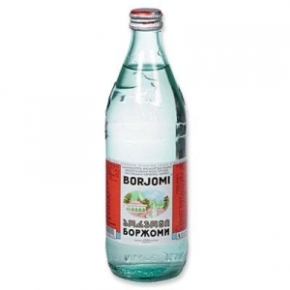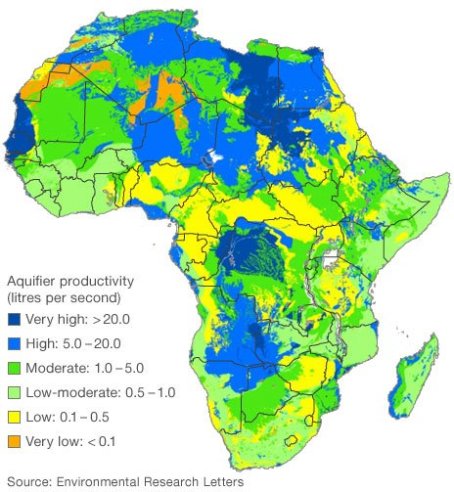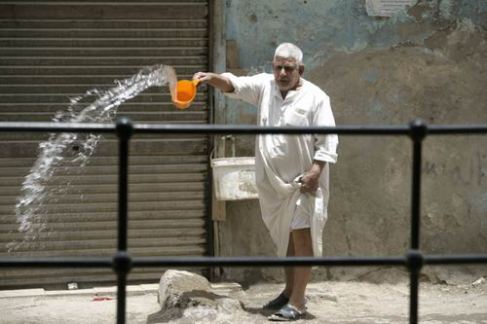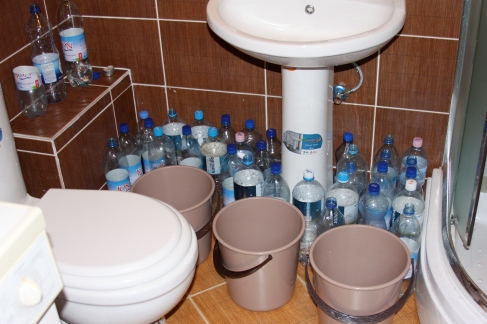Water in Georgia
“Thanks god we have no water problem” says every Georgian and that’s true – one of the few things which is not problematic in Georgia is water. 26060 river (but mostly small ones), 860 lake. We enjoy natural and delicious water all over the georgia and don’t spend money on a bottled water in the shops. That’s a very rare happiness.
But there is still couple of big issue which georgia faces regarding water. The first one is water pollution. Surface-water is polluted mostly by canalization of cities and regions as well as from other wastewater, which flows to rivers, lakes and reservoirs mostly without filtration. The most polluted river is the main river “Mtkvari”, which flows through the capital city Tbilisi.
The second one- Water supply has only approximately 65% of population in Georgia. That’s why the rest of them (living in regions) are getting water directly from water welling up from the earth (wells and etc…).
Georgian environment is protected from polluting constitutionally and the water as a part of it is regulated separately, but still couple of month ago the Georgian Parliament drafted the bill about foreign investors having a right to pollute water in case they have a need for it. There were couple of demonstrations about this bill and now it seems to be rejected. Georgia is already importing mineral water in 40 countries approximately (most imported brand is “Borjomi” mostly popular post Soviet Union states). But from my point of view, because of the great resources and potential, Georgia as well as other countries fromCaucasus region could do more by helping counties with water problems e.g. Africa (where Georgian Water is not imported at all).
Ana Kakalashvili
Georgia
Researchers studying groundwater reserves in Africa discovered the presence of large amounts of groundwater in the Africa, but they cautioned that this may not be a magic solution to the growing needs for fresh water on the continent.
This recent geological map shows that Africa is floating above huge reserves of underground water, similar to the equivalent of 100 times the amount of fresh water resources on the surface.
A team of researchers from London has gathered hundreds of geological maps and data on the aquifer. They have developed geographical maps to form a comprehensive picture of these reserves of groundwater.
Alan McDonald, the chief hydrogeology in the British Geological Survey, who oversaw the study project, said there had been several earlier attempts to determine the amount of groundwater in Africa, “but this is the first time that we have a collection of data and maps together; now we know about quantified water, available groundwater, and potential productivity of the wells.”
It was also discovered that the largest reserves of underground water exist in the driest regions of northern Africa, especially in Egypt, Sudan, Libya, and Algeria. There are also big reservoirs in countries like Botswana, Zambia and Angola.
A large part of the groundwater in this area is at a depth estimated to be between 100 to 250 meters below the earth’s surface. McDonald warned that the difficulty of access to these waters may make it hard to use these reserves for irrigation purposes or to provide drinking water to new urban centers in various parts of the continent.
“The cost of drilling a well in one area at a depth of 50 meters using a hand pump of about six thousand dollars. And this cost rises to 20 thousand dollars when drilling a well at a depth of 150 meters, but access to the largest aquifers and the most profound discovered in North Africa drilling deeper wells could cost more than 100 thousand dollars.” In addition, such wells need constant maintenance to ensure their survival for a long time. Ahmed Awad, geologist at the Egyptian Ministry of Environment thinks that “the launch of a regional project to take advantage of the aquifers in the North African region will require a huge budget, amounting to about 15 billion U.S. dollars.”
The study also includes estimates of the amount of groundwater, but did not specify their quality. The water becomes unusable because of contaminants such as arsenic, fluoride, and other natural landmarks undesirable, such as fecal coliform, nitrates, because the sewage system at the sites and sewage spills. ”
These facts make it necessary for all the countries to work together in order to be able to finance the project and keep the water clean. “This map will be very helpful,” and expressed the hope that a clearer picture of the site aquifers helps reducing conflicts. It may even start a very tight relationship between neighboring countries like Namibia and Botswana through joint ventures between which require the transfer of expertise and technology.
McDonald said that “doing such a map for groundwater with this quality for different parts of Africa is a big job. This will require […]substantial funding for several years, and a broad partnership in all parts of Africa. This will be a great project, but at the moment we do not have the funds to do so.”
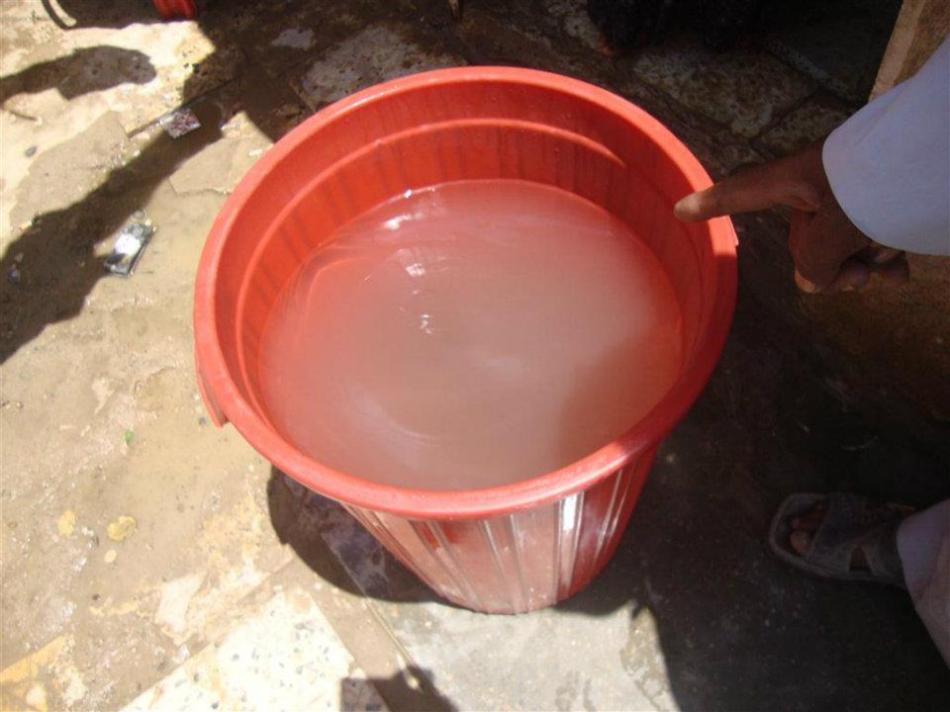
Ali, who lives in West Baghdad excuses himself to his boss “I’m late at work because I was waiting for the some water to come out of the tap the whole night but in the end, there was no water. Then I had to spend money on water and I could not even take a shower before I got here.”
Today, even a country like Iraq with two rivers and lakes suffers from water problems. Al-Sader, a quarter of Baghdad, doesn’t sleep at night not because they are having fun, but because they are waiting for water to come out of taps.
Iraqi problems with water started in 1990. According to Iraqi government figures, the water flow in the Euphrates is currently some 200 cubic meters per second as it crosses into Iraq, less than half of the minimum amount required to help the country meet its basic needs. Much of the water is stopped in Turkey, while Syria, battling its own water crisis, is also drawing on supplies.
http:/
The river Tigris faces similar problems and will be greatly exacerbated if Turkey pushes ahead with its controversial US$2 billion (Dh7.35bn) Ilisu dam project. The Euphrates River is already cut as far as Iraq is concerned and the Tigris will be cut as well if Turkey goes ahead. So If these dams are completed, the flow from the Tigris will be halved from 20.9 billion cubic meters a year to 9.7 billion cubic meters while the flow of water should increase to 500 cubic meters per seconds.
After all that shows the weakness in Iraqi structure. Internally many water liquidation factories were built and cost lots of money but they are useless because there was no feasibility study before.
Water pollution increased after 2003 because of the war, bombs and lots of chemical stuff thrown into the rivers ,marshes and lakes. As a result of that, many people go to hospitals everyday because of the polluted water.
In the end, in Iraq it will be Barrels of water versus barrels of oil
the article by Maryam Mj
Picture by Munaf Ghanim
علي من بغداد يعتذر لمديره لتأخره عن العمل “كنت مستيقظا طوال الليل ، انتظر مجيء الماء ، انتظاري انتهى بلا فائدة فلم يأتي الماء واضطررت لشرائه ،اشعر بالتعب ولاستطيع الاستحمام”.
في الوقت الذي يخترق العراق نهرين كبيرين احدهما يدخل العراق عبر الحدود السورية “الفرات” والثاني عبر الحدود التركية “دجلة” إضافة إلى انهار صغيرة من جهة الحدود الإيرانية لا زال العراقيين يعانون من شحه المياه.
مدينة الصدر أحدى اكبر المدن البغدادية , لها طقوس خاصة في الليل هي السهر وانتظار مجيء المياه لملئ خزانات المنازل , أما من يغلبه النعاس فقد خسر حصته.
علما أن مشكلة العراق مع المياه بدأت منذ عام1990وطبقا لأرقام نشرتها الحكومة العراقية “لقد انخفض منسوب المياه في الفرات إلى 200 متر مكعب وهي اقل من كمية النصف التي يحتاجها العراق لتلبية احتياجاته المائية إضافة إلى ذلك فقد قللت سوريا وتركيا حصص العراق من المياه مما قد يضطر العراق إلى الاعتماد على إمدادات أخرى”.
http://www.youtube.com/watch?v=N-WMRoyiEZ0
وبحسب وزارة التخطيط العراقية “تملك تركيا تجارة مع العراق تقدر بحوالي 13 مليار دولار سنويا ورغم ذلك لا يستطيع السياسيين العراقيين الضغط على الحكومة التركية فيما يتعلق بحصة العراق في نهر دجلة”.
و سوف تتفاقم المشكلة في حال ما باشرت الحكومة التركية ببناء سد اليسو الذي خصصت له مبلغا قدرة 2 مليار دولار الذي سيؤدي إلى انخفاض منسوب المياه في نهر دجلة من 20.9 مليار متر مكعب في السنة إلى 9.7 مليار متر مكعب في حين ينبغي أن يزيد التدفق عن 500 متر مكعب في الثانية.
تعاني البنى التحتية العراقية من ضعف شديد وافتقار الكفاءات إضافة إلى ارتفاع نسبة الفساد الإداري ، فالعديد من مشاريع تحليه المياه أثبتت فشلها وذلك لعدم وجود دراسة جدوى اقتصادية حقيقية قبل الشروع بتنفيذ المشروع.
يشار إلى أن العراق شهد ارتفاع نسبة التلوث بعد عام 2003 بسبب الحرب أضافه إلى رمي المخلفات الكيميائية ومياه الصرف الصحي إلى النهر مباشرة مما أدى إلى ارتفاع نسب الإصابات بالأمراض بين المواطنين.
يواجه الفرات انخفاض في مستوى منسوب مياهه أيضا بعد أنشاء الحكومة السورية عدة سدود ، والسؤال في نهاية المطاف هل سيكون برميل نفط مقابل برميل ماء.
the article by Maryam Mj
Picture by Munaf Ghanim
Here are some links, which will help you to get deeper insight water issues:
UN Water: http://www.unwater.org/statistics_KWIP.html
The World’s Water: http://www.worldwater.org/
Global Policy Forum: Water in Conflict: http://www.globalpolicy.org/the-dark-side-of-natural-resources-st/water-in-conflict.html
The World Bank: Water: http://water.worldbank.org/publications
The Water Project: http://thewaterproject.org/water_stats.asp
WaterAid Publications: http://www.wateraid.org/uk/what_we_do/documents_and_publications/default.asp
Water.org: http://water.org/water-crisis/water-facts/water/
World Health Organization WHO Water and Sanitation: http://www.who.int/water_sanitation_health/database/en/
https://maps.google.com/maps/ms?msa=0&msid=201008556586731981250.0004c7d8548ba4dd9719a
This is a map on which you can find data and interesting links to information about water problems and statistics. Contact us in order to share your article, image or video on this map!
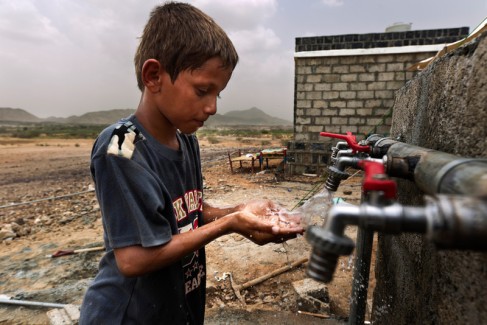 Water in Yemen is one of the most common problems that Yemenis have faced. Sana’a could be the world’s first capital city to go dry because the population is growing at a rate of 7% per year while the water resources are suffering dramatic decreases.
Water in Yemen is one of the most common problems that Yemenis have faced. Sana’a could be the world’s first capital city to go dry because the population is growing at a rate of 7% per year while the water resources are suffering dramatic decreases.
It’s hard and expensive as well to get green water, such as not drinkable water that can be used for other purposes. The utility costs for citizens are around $100 monthly due to the lack of water and the consequent need to dig wells. That is why water supply is in danger and there are a lot subsequent worries about the future of the country and its population.
According to some studies, if the government is not allowed to find some solutions such as keeping the raining water in the suffering areas, Yemeni people will need to immigrate to other countries to in the next ten years.
So we all have to make new strategic plans to save remaining water and to come up with future projects such as campaign to save water and to make it a government priority.
Link recommended
http://science.time.com/2010/12/14/what-if-yemen-is-first-country-to-run-out-of-water/
While people suffer from shortage of water, they continue wasting water. On the other side, governments always warn people from expected severe shortage in water in the coming few years, yet, it doesn’t follow any saving techniques.
There are many habits that people from different areas in the world do that can cause the loss of huge amount of water, they do it either because of lack of awareness or because they simply don’t care.
If we take Egypt as an example we find that many Egyptian houses have more than one leaking faucet that keep on leaking drops of water uselessly. Also, when shaving beards or brushing teeth, Egyptians never stop the faucet and it keeps on falling down heavily. What’s more is that there is this strange daily habit of shop owners in Egypt. They are used to throwing huge amount of water in front of their shops in the morning claiming that it decreases the hot weather. This is weird, isn’t it?
In addition, things like washing the buildings’ stairs and washing the cars with hoses are considered a “chance” for consuming as big amount of water as they can!
Based on the previously mentioned practices and more, we came up with some simple tips to reduce water use and save water in order to secure our future from the danger of drought:
1. Plant Life
Using the same water for many things can hugely reduce the amount of water used. For example, using a pot when rinsing the fruits and vegetables will not just allow us to use little water to do the same job, but also to use this water to water the plants. Also the water of the fish tank and collected rainwater could be a good example to be used to water the plants.
2. Bathing
One of the most wasted amount of water is in bathrooms, so it is advisable that you shorten the period of shower. In addition, you have to close the tap when you brush your teeth or while shaving. In other words: if you don’t need the water just close the faucet.
3. Making our own Low-flush Toilet
Another easy way to reduce the water used in the toilet’s flush is to fill a plastic bottle with sand or water and put them in the toilet tank. This will save 10+ gallons of water per day.
4. Cleaning
Try to minimize the number of utensils and dishes you use for cooking and eating. Don’t use too many spoons, forks and knives so that you wash less number of dishes. In addition, don’t use your dish washer or clothes washer unless they are full with dishes or clothes. Keep the dishes of breakfast and lunch to wash them one time at the end of the day.
5. Check your faucets
Make sure that all the faucets are closed well. Sometimes people leave them loose so they leak drops of water which lead to big loss in water. If the faucet isn’t closed don’t ignore the issue. Make periodical check and repair the leaking ones.
6. Low-flow shower heads and sink spigots
Use low flow shower and low flush. Such tools save huge amount of water.
7. Don’t use hoses
Instead of using hoses to wash cars, use wet sponges or wet piece of cloth to remove dust and clean them, and use same method for washing the stairs of the building or whatever cleaning activities.
8. Water recycling
Use grey water (Water that is generated from domestic activities such as bathing, washing, etc.) and recycle them for other purposes such a`sirrigation or washing balconies.
Arabic:
جرس تنبيه للعالم
البعض يعاني نقص المياه والبعض الأخر يقوم بتبذيره ،جرس الإنذار يقرع ليخبر الناس والحكومات أن خطر شحة المياه قادم في السنوات القليلة القادمة بسبب العادات السلبية للناس في أهدار المياه.
ومن الأمثلة الشائعة لتبذير المياه في مصر ترك صنبور المياه بدون غلقه تماما مما يؤدي إلى تسرب كميات من المياه قد تبدوا قليلة لكن مع تراكمها تصبح كبيرة.
ويحاول أصحاب المحلات التقليل من حرارة الصيف بصب كميات كبيرة من المياه الصالحة للشرب أمام محلاتهم بالإضافة إلى ذلك ترك صنبور المياه مفتوحا عند غسل الأسنان أو الحلاقة دون غلقه مما يؤدي إلى أهدار كميات كبيرة من المياه.
ولعلاج هذه العادات السلبية مع العديد من العادات المماثلة مثل غسل السيارات وغيرها بالمياه الصالحة للشرب.
المياه مصنع الحياة.
لتقليل أهدار المياه استخدام وعاء لشطف الخضار والفواكه يسمح لنا بإعادة باستخدام المياه مره ثانية لسقي النباتات وكذا الحال مع مياه المطر.
استعمال الحمامات
يفضل الاستحمام بصورة سريعة وغلق صنبور المياه عند غسل الأسنان أو الحلاقة، بالإضافة إلى تقليل المياه من سيفون دورات المياه.
عند التنظيف
عدم تستعمل أواني وإطباق كثيرة كذلك عدم غسل الملابس والأطباق ألا أذا كانت هناك كمية كبيرة لغسلها مرة واحدة في الغسالة لتجنب تبذير المياه .
التأكد من غلق كافة الحنفيات وعدم تسريبها للمياه
استخدام دش منخفض التدفق للحفاظ على كمية المياه المتسربة.
بدلا من استخدام خراطيم المياه لغسل السيارات استخدم الأسفنج الربط أو قطعة قماش رطبة لأزاله الغبار مع استخدام نفس الطريقة في تنظيف السلالم.
أعادة تدوير المياه المستخدمة في الشطف والغسل لأغراض أخرى مثل الري وغسل الشرفات.
Water Crisis in Republic of Kosova
|
Kosovo has a central geographical position in the Balkan Peninsula. It is bordered with Albania (southwest), Macedonia (southeast), with Serbia (east, north and northeast) and Montenegro (west). The overall length of the border between Kosovo and neighbouring countries is about 700.7 km.[1]
There are many problems are facing Kosova as a new state in nowadays and one of them is water crisis. Water issues in Kosovo do not only concern supply and access to water, but also access to safe water. In Kosovo, as in many other countries, health and quality of life is increasingly threatened by the poor water quality and scarcity of water reserves. Currently about 75% of the population is covered with water supply services, while only about 55% with sewage services.
According to the World Water Council, “because of the lack of adequate sanitation systems, about 80% of rural population [in Kosovo] consumes contaminated water from domestic wells”. There are various risks for the water supply and the (ground) water quality, depending on the region and the respective water source. The main identified environmental risks are the contamination of water reservoirs, rivers, groundwater and wells. Contamination of water reservoirs, contamination through leaking pipes, contamination of rivers and ground water and contamination of wells.[2]
Most municipalities expect water shortages in summers due to droughts and other reasons. Before 2005, water cuts in Kosovo were mostly of a technical nature. After new pumping stations were built, the water supply situation significantly improved in 2005 and the beginning of 2006 when most of Kosovo was provided with water 24 hours per day. However, during the summers the water situation is still bad because of water usage in agriculture, industry, the watering of pavements and streets as well as car washing.[3] The situation is almost the same nowadays. In 2012, some of the cities in Kosovo, including the capital city Prishtina, are still facing the problem that became a tradition among the citizens.
The main problem is that people forget to do something about this problem, so they familiarize with it. They are used to wait for the water to come in the evening so they can fill up bottles for the next day.
During the election time, almost every politican makes promises about the water issue but after they come in position, they change and they blame the citizens for using too much water.
Today, the majority of Kosovo citizens have trouble with water because the increase of population has increased the need for water. It often happens that our water taps are leaking for days and we do not care to fix them. Thousands of people do not have enough water for drinking and other purposes.
Therefore care of water should not underestimated, especially in Kosovo where pollution in the lakes is very high. The water must not only be protected, it must also be saved.
Here are some tips on how to save water:
- Before you wash the dishes, remove food residues from their surface
- Do not wash dishes under running water, but use the lid for closing the sink hole to collect water in the sink – this will save half of the amount of water needed.
- Use a bucket of water and soap to wash your car using only water hose end
- Collect the food residues instead of washing them away with water cannons
- Do not water the garden with tap water
There are even more advices on how to save water. These advices above are mentioned in case to help you with ideas of saving water and of course, your money. Only this way the Republic of Kosova can be a country that attracts investors. It may also help investment and tourism in Kosovo. So let’s start caring for ourselves and our home too. Let’s be a good example for the others.
Kosovo has limited water resources, so the protection of their quality is one of the main environmental challenges facing everyone. Everyone is responsible for the protection of water and water quality. But together we can face this challenge.
[1]Report, The state water in Kosovo from Ministry of Environment and Spatial Planning, Prishtina 2010 https://www.cimicweb.org/cmo/ComplexCoverage/Documents/Kosovo/Current%20Documents/The%20State%20of%20Water%20in%20Kosovo_2010.pdf
[2] Case Study on the Right to Water and Sanitation in Kosovo, By Bardha Korca, University of Prishtina, Kosovo http://waterwiki.net/images/1/1e/CaseStudyRightToWaterSanKosovo.pdf
[3] Monitoring Department, Water Supply Issues in Kosovo, July 2008 http://waterwiki.net/images/f/f9/Water_supply_issue_in_kosovo-osce.pdf
Water is not a commodity, it is a human right “essential to the full enjoyment of life”. At least, that is the main statement of the UN resolution 64/292. As water cannot be considered an economic good, it should not be subdued to profit-oriented strategies of multinational companies. But reality is actually very different from ideals: both in developing and developed countries, privatization seems to be the most popular trend. In order not to get lost in a glass of (public) water, let’s try to understand which are the controversial sides of this issue.
PROS AND CONS
Needless to say, supporters of water privatisation claim that water is an economic good, not a right: that´s why it can be sold on international markets. Moreover, according their opinion, privatisation is the only way to increase the quality of infrastructures and services, investing money in efficiency and safety. Economic goods mean profits, and as a consequence implementation, attention, avoiding wastes.
Is that correct? Maybe in theory, but several case studies prooved the exact contrary.
First of all, a private or semi-private management of water resources usually causes a 10 % or more annual increase in utilities costs for citizens, according to Food and Water Watch. That was the case of Cochabamba, the third biggest city in Bolivia, where the minimal wage leaves the majority of the population below poverty lines. In 2000, after several days of civil protests caused by the dramatic increase of water rates after the privatisation, the government was obliged to withdraw the contract with the company and to keep the water as a public resource.
Second, it is not true that a profit-oriented strategy automatically cares for efficiency: money, and not structural or quality improvements, is the ultimate goal. Needless to say, this rule is also valid in the field of human and natural resources: multinational companies tend to ignore the impact on local ecosystems as well as the consequences on the local job market. Dropping down wages or firing people is nothing else than part of the game. What recently happened in Vietnam, China and Malaysia is a vivid evidence: multinational companies that could not afford to carry on the contracts simply dropped them off, without caring about the short and long term consequences.
Moreover, water sector should be an economical resource, investing money and creating stable job opportunities both in developing and developed countries, and not another occasion to implement the corruption or the exploitation that is always related with money and power. The world has no need of other criminal cartels that make money out of water, as the ones that exploited Jakarta´s resources under Suharto´s reign.
GLOBAL MOVEMENTS
For all those reasons, several global movement are tying to build a solid alenative to this system. From global justice movements to regional based ones, they are promoting a new model of politics and international cooperation that, strarting from a local perspective, can provide a solution to prevent the waste of water and to redefine the way we manage common goods.
LEARN MORE
Alternative World Water Forum http://www.fame2012.org/en/
Food and Water Watch http://www.foodandwaterwatch.org/
VIDEO RECOMMENDATION
http://www.youtube.com/watch?v=Wy6DuQmV3Jw
